What To Wear Cross Country Skiing

Author: Bert Hinkley, nordic ski expert at Webcyclery & Webskis
Last updated: January 2023
Once you’ve got most of the gear you need to start skiing, let's go over another important piece of the puzzle. What you wear out in the snow can be just as important to your performance and comfort as what you’re skiing on.
Read this guide on what to wear cross country skiing so you stay warm, dry, and comfortable this winter.
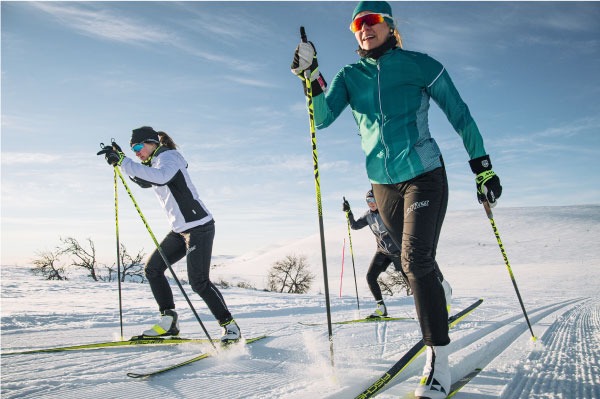
Don't dress for alpine skiing
With downhill skiing you may dress up in thick layers for cold rides up the lift, but cross country skiing is a much more active sport. If you wear too many layers of the wrong material, you'll end up sweating too much, which in turn can chill you to the bone once the sweat starts to evaporate.
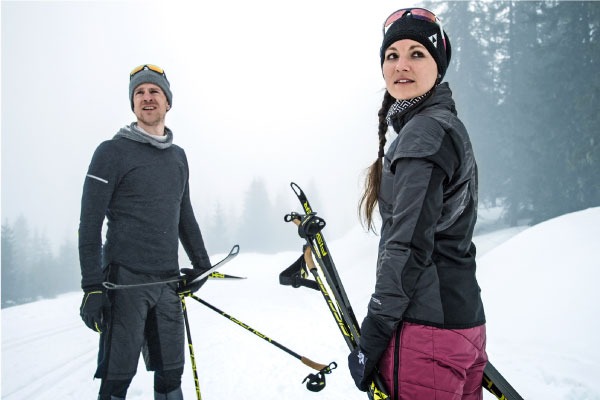
It's all about the right layers and material
Because nordic skiing is such an aerobic exercise, think of it like running. If you dress in a down jacket and hard shell pants, you’ll certainly be sweating buckets in no time.
The idea is to dress in a few slim layers that keep you warm while allowing your body to breathe. How you dress is also dependent on what kind of skiing you’ll be doing and the weather conditions. For instance, a racer’s wardrobe will need to be lighter than someone out for some casual exercise.
Attributes of good cross country ski clothing:
- Moisture-wicking: when you're active you sweat, and clothing that can help take the sweat off your body will help keep you warm
- Flexible: nordic skiing requires lots of movement in your arms and legs, so you don't want anything restrictive
- Breathable: your body heat will rise when nordic skiing, and clothing that allows some of that heat to escape will keep you fresh and comfortable
- Lightweight: heavy clothing will slow you down, restrict your movement, and make you overheat
- Wind-stopping: outer layers that dull the wind will help keep your sweat from freezing you to the bone
Fabrics you should to wear cross country skiing:
- Wool: Fabrics made from wool, especially merino wool, provide solid insulation and breathability, while wicking away moister so you stay dry. Wool is a great choice for base layers and middle layers. Woolen fleece layers can even be good outer layers in dry conditions.
- Synthetic fabrics: Polyester and other synthetic fabrics (especially ones that contain wool) are also great options. They wick away moisture and provide warmth and breathability, which is exactly what you need for cross country skiing.
Fabrics to avoid when cross country skiing:
- Cotton: as they say in the outdoor sports world, "cotton kills" meaning that it's not a good choice for exercise clothing. Cotton absorbs moisture instead of wicking it away, leaving you cold and damp, which on a frigid day could be dangerous.
- Down jackets: unless you're going for a very leisurely ski in seriously cold temps, down jackets won't let your body heat escape and will cause you to overheat and sweat which will freeze you to the bone once you stop moving.
- Waterproof fabrics like Gore-Tex: Similar to down, waterproof fabrics don't breathe well enough to stop you from sweating when you're engaging in exercise.
Exactly what you wear and how you layer depends on the temperature conditions and how strenuous the skiing will be.
- Temperature: Obviously you're going to want to wear different layers on a bright spring afternoon than you would on a dark and windy winter morning. When the temps are higher, you'll probably want to choose less layers and have them be lighter, while an extra warm layer is a good idea when the conditions are freezing.
- Intensity: The other important factor to consider is how strenuous your activity is likely to be. Skate skiing is typically a harder workout than classic laps, so you might want to choose lighter or fewer layers if you're skating. Even if you feel uncomfortable when you get out of your warm car, after a minute or two of skiing you'll be glad you don't have to stop and peel off layers. As they say, "Be bold, go cold!"
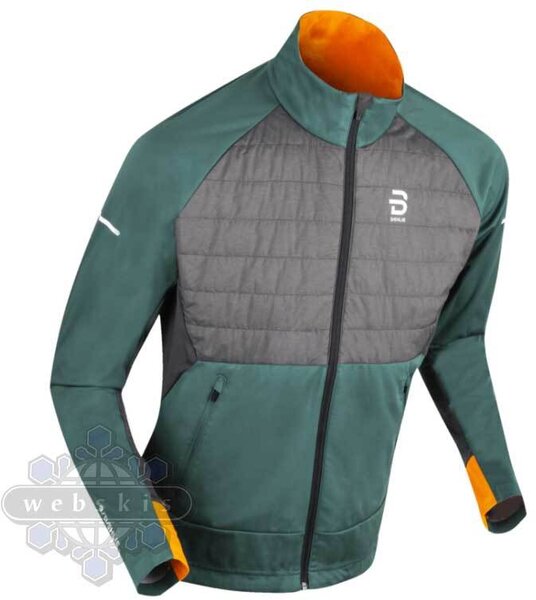
Upper body layers
For your torso, you’ll typically want 3 layers to make sure you stay warm and dry.
1. Lightweight moisture-wicking base layer
For the layer that touches your body, go for a lightweight base layer made of wool or synthetic fabric that wicks away moisture. The goal with this layer is to prevent sweat build up, not to add warmth.
2. Warm middle layer
The middle layer is where you add the warmth. Trap in heat with something like a fleece pullover, but make sure this layer isn't overly bulky. On a warmer day, you might need to skip this layer so you don't overheat.
3. Lightweight, breathable cross country ski jacket
Finally, tie it all together with a lightweight, breathable outer layer that will keep the wind and snow getting to you. Layers advertised as soft shells are usually a good bet. Water and wind resistance, breathability, flexibility, and light weight are all key.
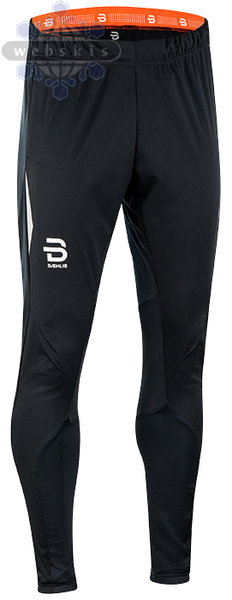
Lower body layers
You can adhere to the same 3-layer principle for your lower body on cold days, or stick with two on warmer days that hover around freezing. For the two layer system, just make sure your undergarment is both warm and made of a moisture-wicking material.
1. Lightweight, moisture-wicking undergarment
Just like with your upper body, choose a lightweight undergarment made of wool or synthetic fabric for the layer that's closet to your body in order to wick away moisture.
2. Warm middle layer
Next, go for a warmer middle layer to trap in heat. Long underwear made of wool is a great choice. On a warmer day, you might skip this layer so you don't overheat.
3. Lightweight, breathable cross country ski pants
Over top of your long underwear, choose a lightweight outer layer to provide wind and water resistance. Softshell cross country ski pants are great, but spandex also works.
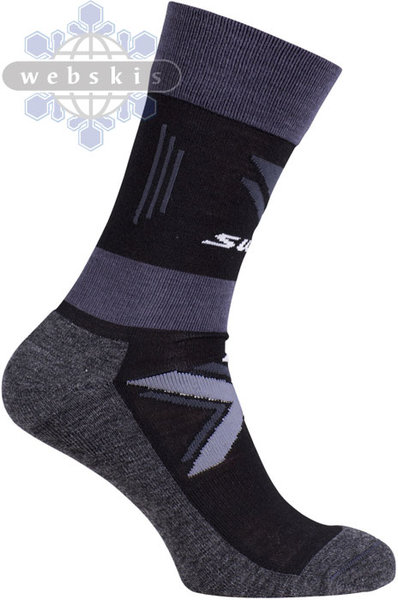
Cross country ski socks
Don’t use overly thick, fully wool socks; they will make your feet sweat and can cause blisters. A thinner sock made of the right material combined with a proper boot fit offers the best performance and level of comfort.
Go for a synthetic sock material and make sure they come up over your ankles to help ensure that snow doesn't get into your boots. Your feet will stay warm because you're moving your legs and feet constantly.
Cross country ski gloves
Choose gloves over mittens so you can get a better grip on your poles. You won't need massive alpine ski gloves either, as the workout you'll be getting will make your hands sweat if your gloves don't breathe well.
Cross country ski gloves are designed to provide warmth, breathability, and good grip. It's best to own a pair of lighter weight gloves for sunnier days as well as some warmer insulated gloves for cold, windy weather.
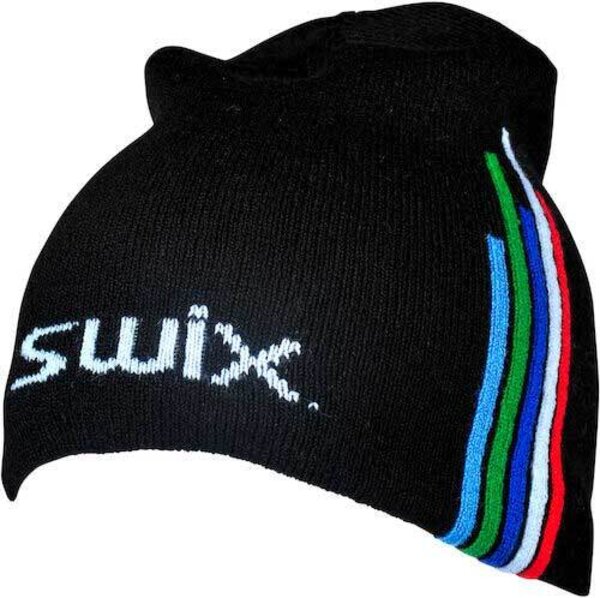
Cross country ski hats
Go for a hat or headband instead of a ski helmet. Cross country skiing is less dangerous than alpine skiing, so helmets aren't necessary. You'll be much more comfortable in a ski hat that's warm, breathable, and wicks moisture from your head. And you won't stick out like a sore thumb.
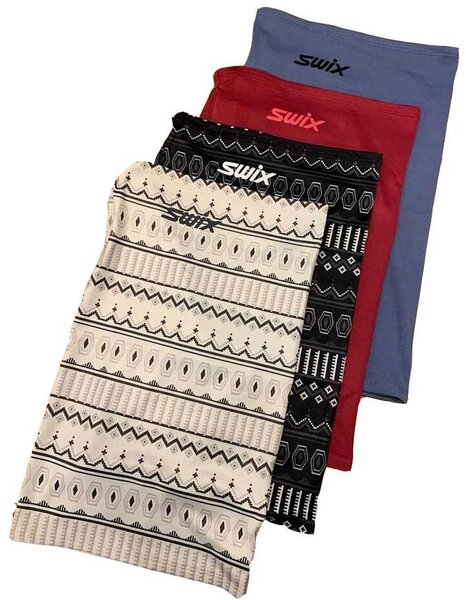
Neck gaiters
Neck gaiters are a great way to keep the chill from getting into your jacket. If you're not already a neck gaiter fan, you'll be surprised at how much warmer you'll feel by keeping your neck warm. This is a must on extra cold days.
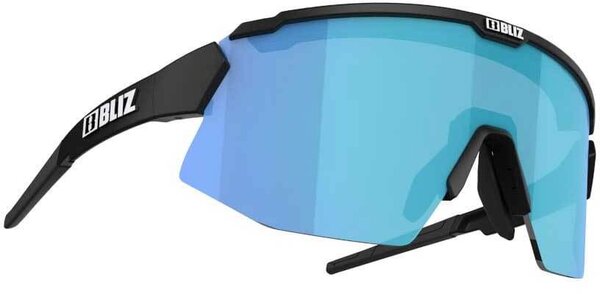
Sunglasses
Wear sunglasses instead of goggles. Unless you're out in a blizzard, athletic sunglasses are the way to go, as they are lighter and less obtrusive to the movements of nordic skiing.
Now that you’ve got an idea of how you need to dress for cross country skiing, check out the clothing we sell here at WebCyclery and WebSkis.
Want to check out more helpful cross country skiing guides?
